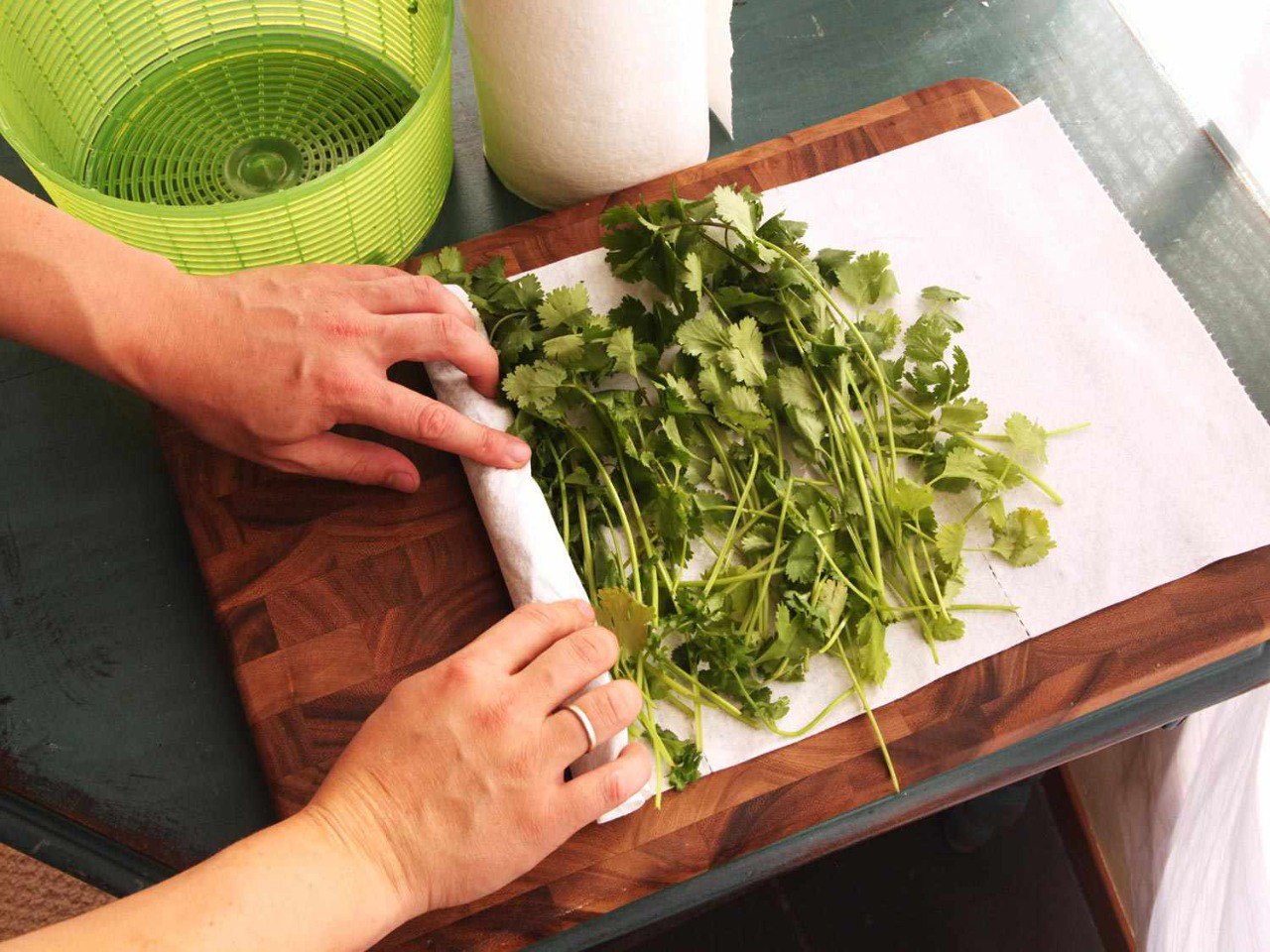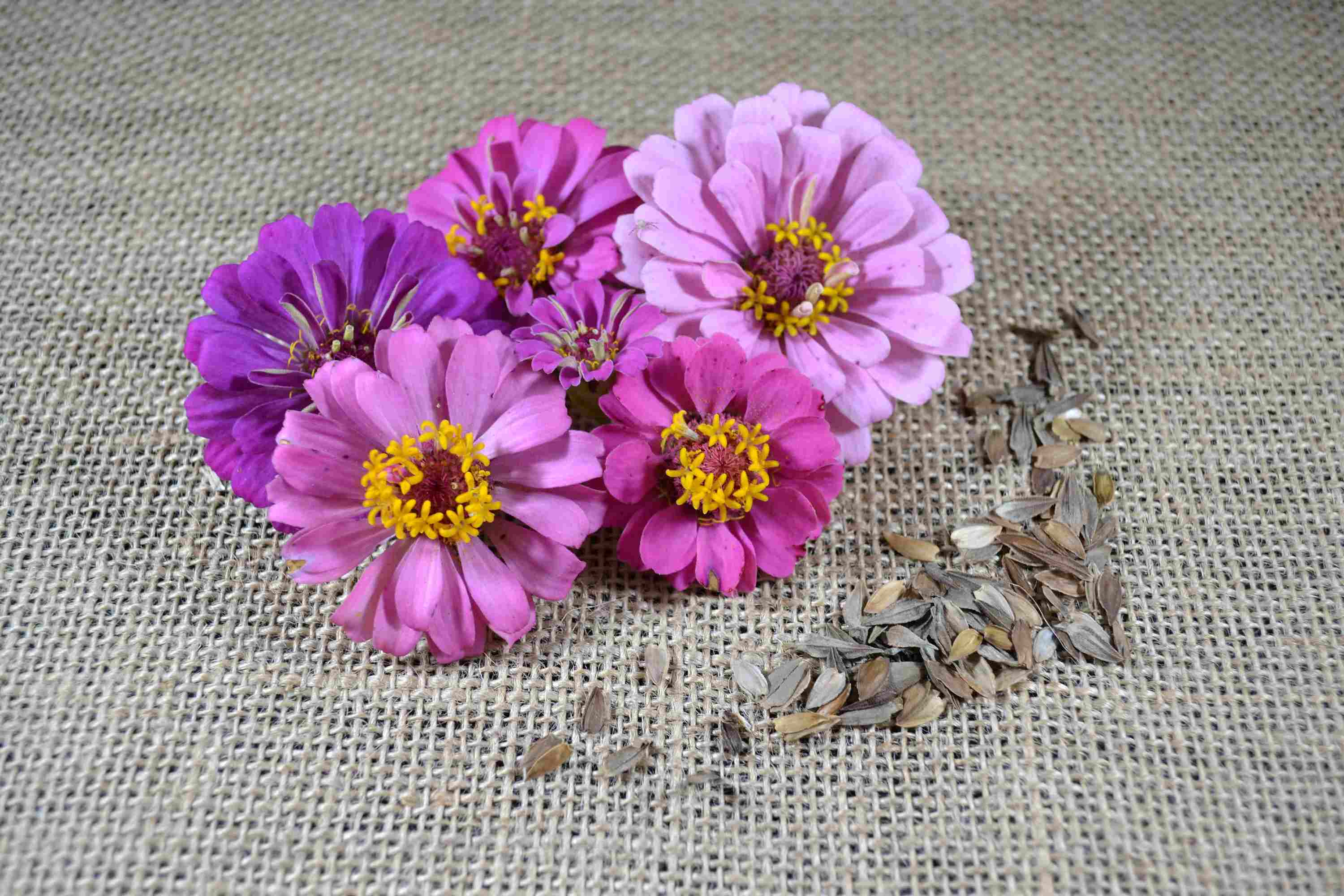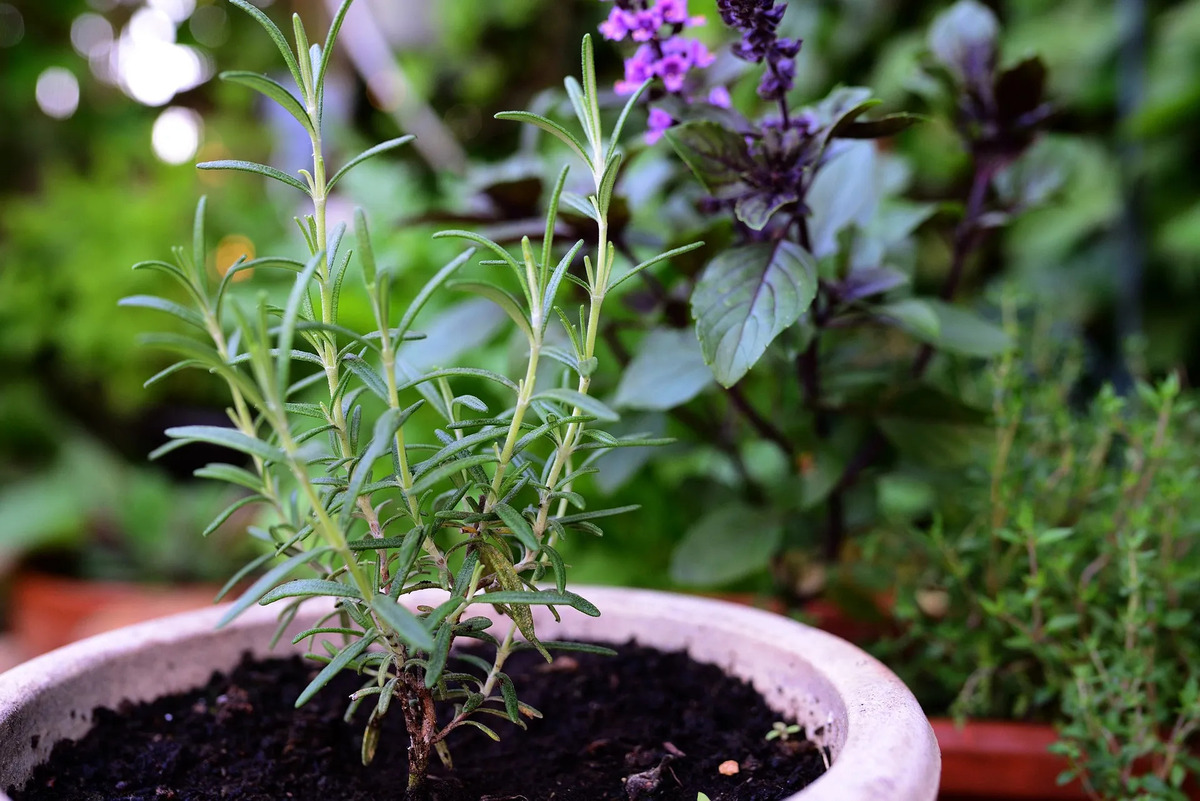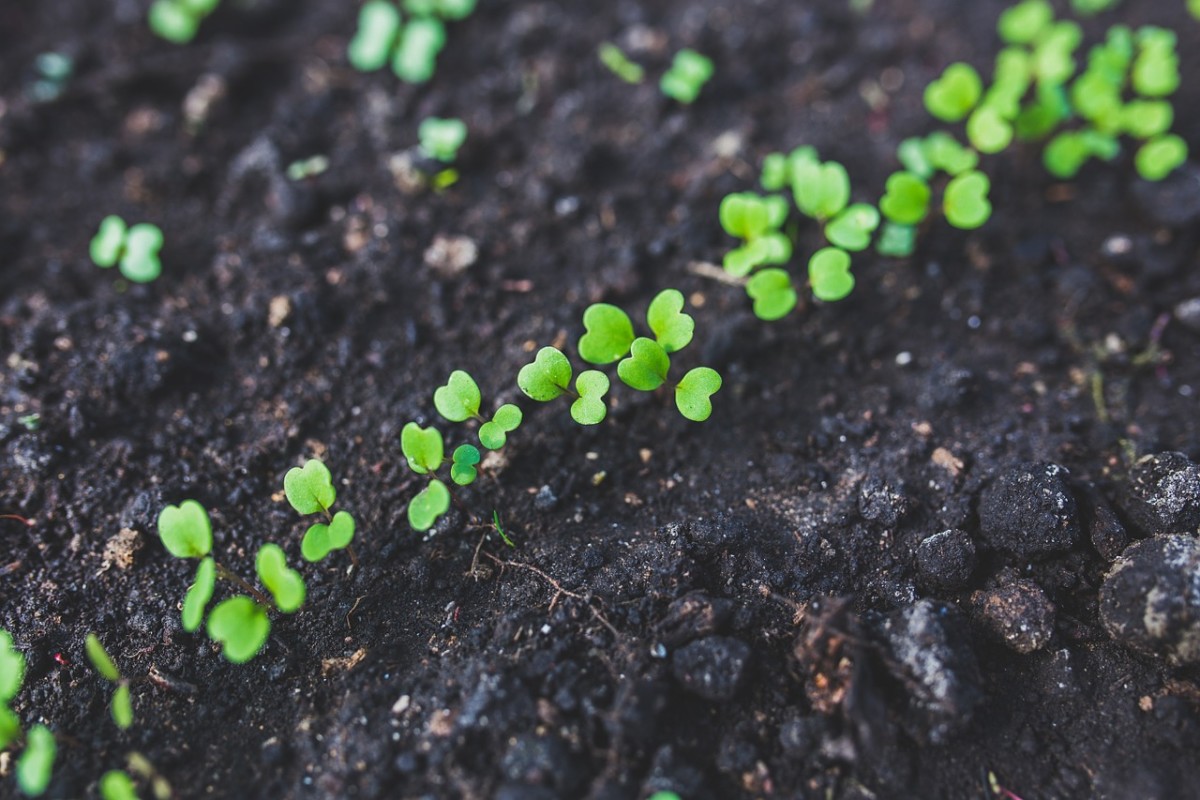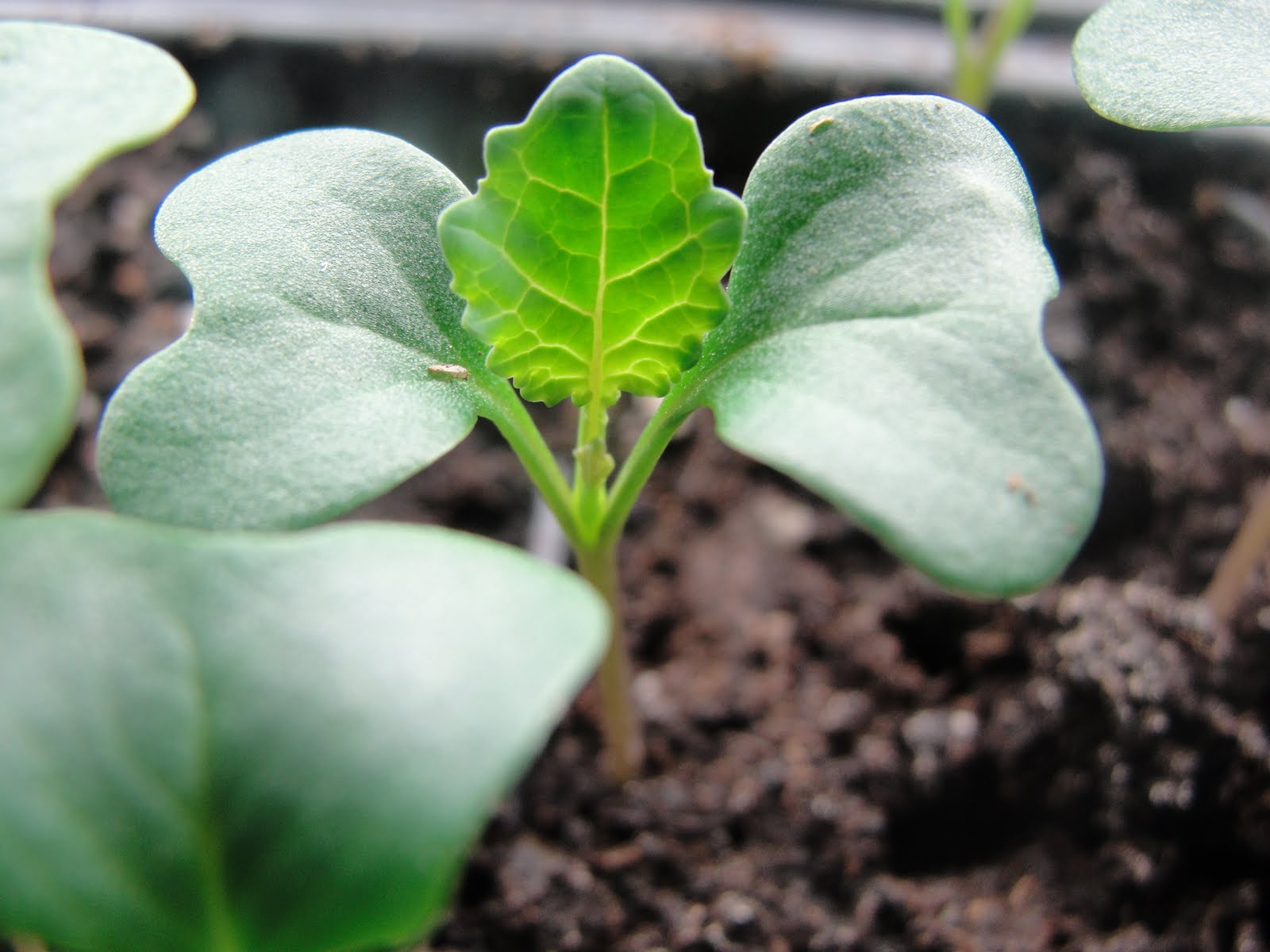Home>Types of Gardening>Edible Gardening>How To Save Seeds From Vegetables
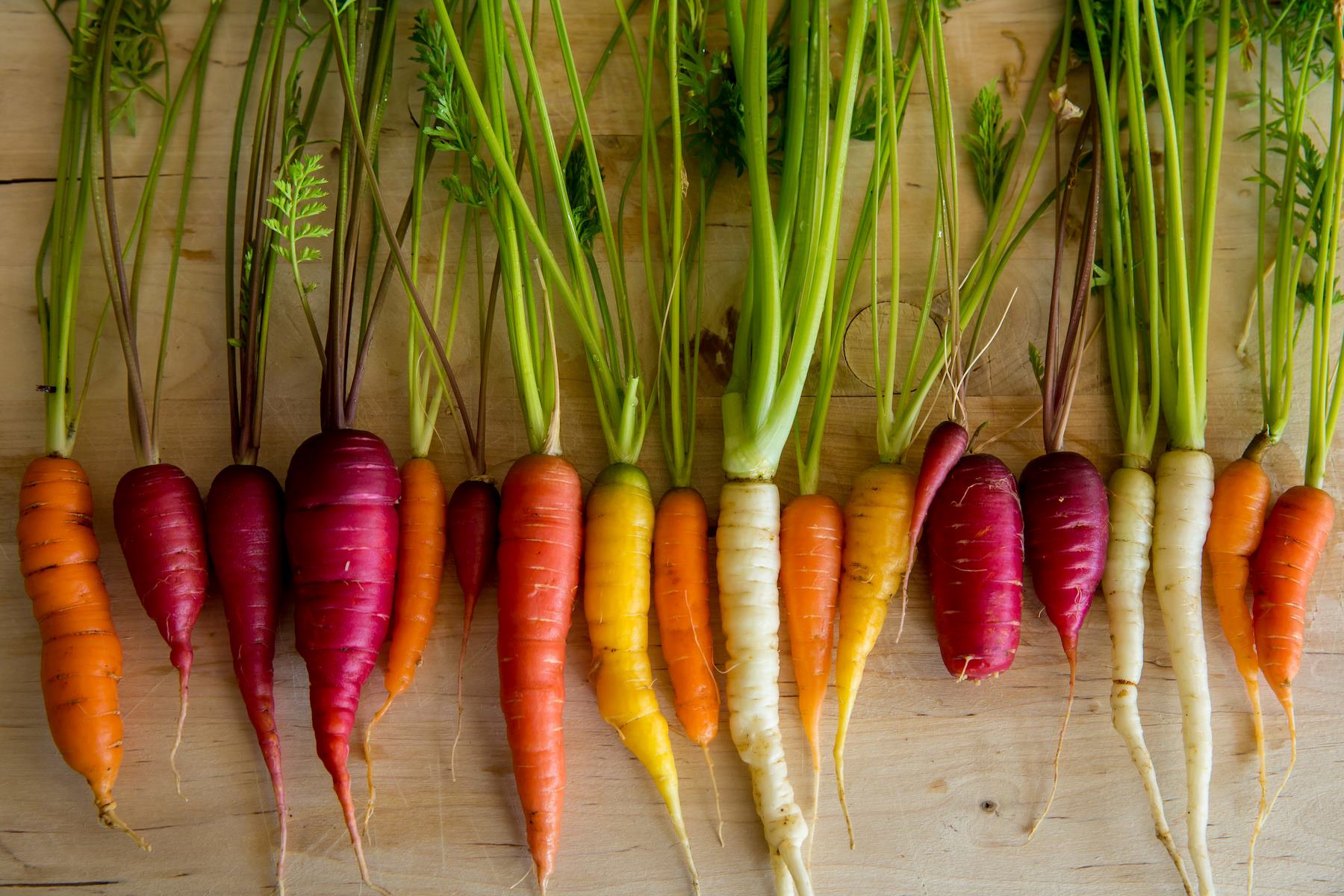

Edible Gardening
How To Save Seeds From Vegetables
Published: September 17, 2023
Learn how to save seeds from vegetables and improve your edible gardening skills with our helpful guide. Start your seed saving journey today!
(Many of the links in this article redirect to a specific reviewed product. Your purchase of these products through affiliate links helps to generate commission for Chicagolandgardening.com, at no extra cost. Learn more)
Table of Contents
Introduction
Welcome to the world of edible gardening! Growing your own vegetables can be a rewarding and fulfilling experience. Not only do you get to enjoy the fruits of your labor, but you also have the opportunity to save seeds from your favorite plants and continue the cycle of growth year after year. In this article, we will delve into the fascinating world of seed saving, exploring its importance, the vegetables best suited for seed saving, and the techniques and tips to ensure successful seed preservation.
Saving seeds from your vegetables is like capturing a piece of magic. It allows you to harness the potential of a single plant and propagate it into an abundant harvest in the future. By preserving the seeds, you become a part of the ancient tradition of seed saving, passing down the knowledge and biodiversity from one generation to the next.
There are several compelling reasons why you should consider saving seeds from your vegetables. Firstly, it empowers you to become self-sufficient and less reliant on commercial seed sources. By selecting and saving seeds from your own plants, you can adapt them to your specific growing conditions, creating a local seed bank that is well-adapted to your climate and soil.
Moreover, saving seeds promotes genetic diversity in our food system. In today’s modern agricultural practices, many commercial varieties are bred for uniformity, shelf life, and transportability, often at the expense of flavor and nutritional value. By saving heirloom or open-pollinated seeds, you help preserve unique and diverse plant varieties that may otherwise disappear from our gardens and plates.
When it comes to seed saving, it’s important to know which vegetables are best suited for the task. While all plants produce seeds, some are easier to save than others. Generally, self-pollinating plants such as tomatoes, beans, and peas are the ideal candidates for beginners because they have a lower chance of cross-pollination. However, don’t let that discourage you from saving seeds from other vegetables like peppers, lettuces, or cucumbers, which can still be successfully preserved with proper techniques.
Understanding plant pollination is key to successful seed saving. Some vegetables are self-pollinating, meaning they fertilize themselves without the need for external assistance. Others, like corn or pumpkins, are cross-pollinated and rely on insects or wind to transfer pollen between plants. It’s important to know the pollination habits of the vegetables you wish to save seeds from, as this will influence how you isolate and protect them from cross-pollination.
Importance of Saving Seeds
Saving seeds from your vegetables is not just a simple gardening practice; it holds immense importance for both individuals and the global food system. Here are some key reasons why seed saving is crucial:
- Biodiversity preservation: Seed saving helps maintain the rich diversity of plant species. As commercial agriculture focuses on a limited number of high-yielding varieties, many unique and heirloom plant varieties are at risk of extinction. By saving and sharing seeds, we can contribute to the preservation of these precious genetic resources.
- Adaptation to local conditions: When you save seeds from your own plants, they gradually adapt to the specific climate, soil, and pests in your region. Over time, you develop locally adapted varieties that thrive in your own garden, reducing the need for synthetic inputs and creating a sustainable and resilient food production system.
- Cost-saving: Buying seeds every year can be expensive. By saving seeds from your vegetables, you can eliminate or reduce the need to purchase seeds. This not only saves money but also gives you more control over your food production costs.
- Preserving flavor and nutrition: Commercially produced vegetable varieties are often selected for their ability to withstand long-distance shipping and have a longer shelf life. Unfortunately, this sometimes comes at the expense of flavor and nutritional value. By saving seeds from heirloom or open-pollinated varieties, you can preserve the superior taste and nutritional qualities of these plants.
- Fostering self-sufficiency: Seed saving empowers individuals and communities to become more self-sufficient in food production. By saving and sharing seeds with others, you contribute to building a resilient and sustainable local food system that is not dependent on external seed sources.
Seed saving is a beautiful way to connect with the natural world and participate in the ancient tradition of cultivating and conserving plant life. It allows us to play an active role in preserving biodiversity, adapting plants to local conditions, and promoting a more sustainable and resilient food system. So, let’s dive into the fascinating world of seed saving and discover the joy of nurturing plants from seed to harvest!
Choosing the Right Vegetables to Save Seeds From
When it comes to saving seeds, not all vegetables are created equal. Some plants are easier to save seeds from, while others require more advanced techniques. Here are some key factors to consider when selecting the right vegetables to save seeds from:
- Open-pollinated varieties: Choose vegetables that are open-pollinated or heirloom varieties. These plants will reproduce true to type from saved seeds, meaning the offspring will closely resemble the parent plant. Avoid hybrid varieties, as the seeds may not produce consistent or desirable characteristics.
- Non-GMO and organic: To ensure the purity of the saved seeds, choose vegetables that are non-GMO and grown organically. This reduces the risk of unintentional cross-pollination from genetically modified or chemically treated plants.
- Self-pollinating vs. cross-pollinating: Beginners may find it easier to start with self-pollinating vegetables, such as beans, peas, tomatoes, and lettuce. These plants have flowers that contain both male and female reproductive organs and are less likely to cross-pollinate with other varieties nearby. Cross-pollinating vegetables, like cucumbers, corn, and squash, require isolation techniques to maintain the purity of the saved seeds.
- Isolation distance: If you want to save seeds from cross-pollinating vegetables, it’s important to know the required isolation distance. This refers to the minimum distance you need to maintain between different varieties of the same species to minimize cross-pollination. Proper spacing or using physical barriers like nets or cages can help prevent unwanted hybridization.
- Population size: Saving seeds from a sufficient population is crucial to maintain genetic diversity. Aim for a minimum of 20-50 plants of each variety when saving seeds. This ensures that the seeds you save represent a wide range of genetic traits and reduces the risk of inbreeding depression.
Remember, the best way to gain experience in saving seeds is through hands-on experimentation. Start with a few favorite vegetables and gradually expand your seed-saving repertoire as you gain confidence and knowledge. Don’t be afraid to make mistakes; they are essential learning opportunities on your seed-saving journey.
Understanding Plant Pollination
Pollination is a fundamental process in the plant world that involves the transfer of pollen from the male reproductive organ to the female reproductive organ of a flower. Having a basic understanding of plant pollination is essential for successful seed saving. Here are some key concepts to know:
- Self-pollination: Some plants have flowers that are designed for self-pollination, where the pollen from the male reproductive organ (stamen) is transferred directly to the female reproductive organ (pistil) within the same flower. Examples of self-pollinating vegetables include tomatoes, beans, peas, and lettuce. Self-pollinated plants have a lower risk of cross-pollination and are generally easier to save seeds from.
- Cross-pollination: Other plants require pollination between different flowers to reproduce. This can occur through various means, including wind, insects, birds, or other pollinators. Cross-pollinating vegetables, such as cucumbers, corn, and squash, have separate male and female flowers. For seed-saving purposes, it’s important to prevent cross-pollination between different varieties to maintain the integrity of the saved seeds.
- Isolation techniques: To prevent cross-pollination in cross-pollinating vegetables, you can use isolation techniques. This involves physically separating different varieties by distance, time, or barriers to minimize the chance of pollen transfer. For example, you can plant different varieties of the same species on opposite sides of the garden or stagger their flowering times. Covering plants with fine mesh or using bee-excluding bags can also help ensure isolation.
- Hand pollination: In some cases, you may want to take control of the pollination process to ensure pure breeding. Hand pollination involves manually transferring pollen from the male to the female flower using a small brush or cotton swab. This technique is often used for crops like squash or melons, where their large, showy flowers tend to attract multiple pollinators.
- Record-keeping: To maintain the purity of saved seeds, it’s important to keep detailed records of the varieties planted and the isolation methods used. This will help ensure that the next generation of plants will closely resemble the parent plants and retain their specific traits.
Understanding how plants reproduce and the different pollination mechanisms can significantly improve your success rate in seed saving. Whether you’re dealing with self-pollinating vegetables or cross-pollinating crops, careful observation, planning, and implementation of appropriate techniques will help you maintain the integrity and genetic diversity of your saved seeds.
Seed Saving Tools and Supplies
When it comes to saving seeds, having the right tools and supplies can greatly facilitate the process and ensure the viability of the saved seeds. Here are some essential items to have on hand:
- Garden scissors/knife: A sharp pair of garden scissors or a knife is crucial for harvesting mature seed heads or fruits. Use them to carefully remove seed pods or fruits from the plants without damaging the seeds.
- Seed harvesting containers: Use containers such as paper bags, envelopes, or glass jars to collect and store harvested seeds. Avoid plastic bags or containers that can trap moisture and lead to seed spoilage.
- Seed cleaning screens: Seed cleaning screens or sieves of various sizes are helpful in separating the seeds from the chaff, debris, or plant material. These screens allow you to clean the seeds thoroughly before storage.
- Drying trays or screens: Proper drying is crucial for seed viability. Use trays or screens to spread out harvested seeds in a single layer. This allows for good air circulation and prevents the seeds from sticking together or becoming moldy during the drying process.
- Labels and markers: Accurate labeling is essential to keep track of different varieties and their unique characteristics. Use weather-resistant labels or markers to clearly identify each batch of saved seeds.
- Seed storage containers: Choose airtight containers such as glass jars, tin cans, or resealable bags to store your properly dried and cleaned seeds. Make sure the containers are placed in a cool, dry, and dark location to maximize seed longevity.
- Desiccant packets: To prevent moisture buildup and fungal growth, consider adding desiccant packets or silica gel inside the seed storage containers. These packets help absorb excess moisture and maintain the optimal moisture level for seed longevity.
- Reference materials: Keep a collection of seed saving books, guides, or online resources that provide detailed information about specific vegetables and their seed-saving requirements. These references can help you troubleshoot potential issues and expand your knowledge as a seed saver.
Having the right tools and supplies not only simplifies the seed-saving process but also ensures that your saved seeds are properly handled, cleaned, and stored, maximizing their viability and future success when growing plants from them. Remember to clean and sterilize your tools and containers before each use to prevent the spread of diseases or pests that can affect the quality of your saved seeds.
Steps to Saving Seeds from Vegetables
Seed saving is a fascinating process that involves a few simple steps to ensure the successful preservation of the seeds. Here is a general guide to saving seeds from vegetables:
- Choose and identify mature fruits: Select healthy and fully ripe fruits or seed heads from the vegetables you wish to save seeds from. Make sure they have reached their peak maturity and are free from any signs of disease or pest damage.
- Extract the seeds: Depending on the vegetable, the process of extracting the seeds may vary. For fleshy fruits like tomatoes or peppers, squeeze or scoop out the seeds and pulp into a container. For dry pods or seed heads, gently shake or crush them to release the seeds. Take care not to damage the seeds in the process.
- Clean the seeds: For seeds with sticky pulp or remaining plant material, you need to clean them to remove any debris that could potentially harbor diseases or affect seed viability. Place the seeds in a sieve or screen and rinse them under running water, gently rubbing them to remove the pulp or attached debris.
- Dry the seeds: After cleaning, spread the seeds out on drying trays or screens in a single layer. Place them in a well-ventilated area away from direct sunlight to dry thoroughly. Stir or flip the seeds occasionally to ensure even drying. Proper drying helps prevent mold and prolongs the storage life of the seeds.
- Label and store the seeds: Once the seeds are completely dry, label them with the variety name, date, and any other relevant information. Transfer the seeds to airtight containers, such as glass jars or resealable bags, and store them in a cool, dry, and dark place. Remember to include a desiccant packet to absorb excess moisture.
- Monitor and test seed viability: Periodically check on your stored seeds to ensure they remain in good condition. You can perform a simple seed germination test by placing a few seeds on a moist paper towel and observing their germination rate. If the germination rate is low, you may need to replace those seeds with fresh ones in the upcoming growing season.
It’s important to note that not all vegetables can be saved and stored as seeds. Some vegetables, such as onions, carrots, and radishes, are biennials that require two growing seasons to produce viable seeds. It’s also worth researching specific seed-saving techniques for each vegetable to ensure optimal results.
By following these steps and adapting them to the specific requirements of the vegetables you are saving seeds from, you can successfully preserve the genetic diversity and future abundance of your favorite vegetable varieties.
Cleaning and Storing Saved Seeds
Properly cleaning and storing saved seeds is essential for maintaining their viability and ensuring successful germination in future growing seasons. Here are some important steps to follow:
- Thoroughly dry the seeds: Before cleaning the saved seeds, ensure they are completely dry. This helps prevent mold growth and extends their storage life. Spread the seeds out on a drying tray or screen in a well-ventilated area, away from direct sunlight. Allow them to air dry for at least a week or until they are brittle and snap when folded.
- Remove debris and chaff: Cleaning the seeds involves separating them from any remaining plant debris or chaff. You can use screens or sieves of different sizes to separate larger particles from the seeds. Gentle blowing or light shaking can help remove lighter debris. Be careful not to damage or mix different seed varieties during this process.
- Winnowing: For seeds with lightweight chaff or husks, you can use the technique of winnowing. This involves gently pouring the seeds and chaff from one container to another in front of a gentle breeze or using a fan. The wind will carry away the lighter chaff while the heavy seeds fall back into the container.
- Sieve or screen cleaning: For seeds with smaller debris or clusters, you can use progressively finer screens or sieves to further clean the seeds. Gently shake or rub the seeds against the screen to separate them from any remaining debris. Repeat this process with smaller-sized screens until the seeds are free from impurities.
- Label and store the seeds: Once the seeds are clean and separated from debris, it’s important to label them with the variety name, date, and any additional relevant information. Place the seeds in airtight containers such as glass jars, tin cans, or resealable bags. Include a desiccant packet in each container to absorb excess moisture and help maintain seed viability.
- Optimal storage conditions: Store the labeled seed containers in a cool, dry, and dark place to maintain seed quality. The ideal temperature for seed storage is between 32°F (0°C) and 41°F (5°C). A basement, pantry, or refrigerator can be suitable storage locations. Avoid storing seeds in areas with fluctuating temperatures, high humidity, or direct sunlight.
- Regular monitoring: Periodically check on your stored seeds to ensure they remain in good condition. Look for any signs of moisture, mold, or insect infestation. If necessary, remove any affected seeds and replace them with fresh ones. It’s also a good practice to perform germination tests each season to assess seed viability.
By following these cleaning and storage practices, you can ensure the longevity and viability of your saved seeds. Remember that different types of seeds have different storage durations, so it’s important to regularly assess and rotate your seed stock to ensure the best results when it’s time to plant.
Tips for Successful Seed Saving
Seed saving is a rewarding endeavor that allows you to preserve and propagate your favorite vegetable varieties. To increase your chances of successful seed saving, consider the following tips:
- Start with easy-to-save seeds: If you are new to seed saving, begin with vegetables that are known for their ease in saving seeds, such as beans, peas, tomatoes, and lettuce. These plants are self-pollinating and have a lower risk of cross-pollination, making the process more straightforward.
- Grow different varieties: To avoid genetic bottlenecking and maintain genetic diversity, grow multiple varieties of the same vegetable. This ensures a wider gene pool and reduces the risk of inbreeding depression, which can result in weaker plants and reduced viability.
- Select healthy and vigorous plants: Choose robust and disease-free plants for seed production. Stronger plants are more likely to produce high-quality seeds that will result in healthy offspring.
- Practice proper isolation: To prevent cross-pollination in plants that require it, create physical barriers, such as nets, cages, or distance, to separate different varieties. Pay attention to the recommended isolation distances for each type of vegetable to maintain seed purity.
- Harvest seeds at the right time: Allow fruits or seed heads to fully mature on the plant before harvesting them for seed saving. The seeds should be ready for harvesting when they are dry, hard, and have changed color, indicating full maturity.
- Label and track your seeds: Accurate labeling is essential for keeping track of different varieties and their characteristics. Use waterproof markers or labels on seed containers to avoid confusion and ensure proper identification during future planting seasons.
- Store seeds in suitable conditions: Keep your saved seeds in a cool, dark, and dry location. Proper storage conditions help maintain seed viability and extend their shelf life. Avoid storing seeds in areas prone to temperature fluctuations, high humidity, or exposure to sunlight.
- Learn from experienced seed savers: Connect with local gardening communities or organizations that focus on seed saving. Gain knowledge and insights from experienced seed savers who can provide valuable advice, techniques, and even seed exchanges.
- Continuously learn and experiment: Seed saving is a continuous learning process. Take notes, track your successes and challenges, and use each season as an opportunity to improve your seed-saving skills. Experiment with different techniques and varieties to expand your knowledge and grow your seed-saving expertise.
Remember, seed saving is not only about preserving seeds but also about preserving the stories, flavors, and traditions associated with unique vegetable varieties. With practice and passion, you can become a skilled seed saver, contributing to biodiversity, food security, and the continuous cycle of growth and harvest in your edible garden.
Common Seed Saving Mistakes to Avoid
Seed saving is a valuable skill but one that requires attention to detail and proper techniques. Avoiding common mistakes can significantly improve your success rate and the quality of your saved seeds. Here are some common seed-saving mistakes to be aware of and avoid:
- Not selecting open-pollinated varieties: Saving seeds from hybrid varieties can result in unpredictable offspring, as they do not reproduce true to type. Choose open-pollinated or heirloom varieties to ensure consistent characteristics in the next generation.
- Mixing seed varieties during harvest and cleaning: When harvesting and cleaning seeds, be cautious not to mix different varieties. Accidentally mixing seeds can lead to hybridization and loss of desired traits. Separate and label each variety from the moment of harvest through the cleaning process.
- Harvesting seeds too early or too late: Harvesting seeds too early may result in immature seeds that lack viability. Conversely, if seeds are left on the plant for too long, they may become overripe or susceptible to environmental damage. Learn the optimal time for seed harvest for each vegetable variety you save.
- Not providing proper isolation: Cross-pollinating plants require isolation to prevent unwanted mixing of pollen. Failure to isolate different varieties can lead to unintentional hybridization. Be aware of the specific isolation distances required for each plant and use physical barriers or timed planting to ensure seed purity.
- Improper seed drying: Inadequate drying of saved seeds can lead to mold, mildew, or rot. Seeds should be thoroughly dried before storage to prevent moisture-related issues. Ensure proper air circulation and humidity levels during the drying process to maintain the quality of the seeds.
- Inadequate labeling and record-keeping: Accurate labeling is essential to avoid confusion and ensure the identification of saved seeds. Neglecting to label varieties properly can lead to incorrect planting or loss of specific traits. Keep detailed records of each variety, seed source, date of harvest, and any notable characteristics or observations.
- Inadequate seed storage: Failing to store seeds in suitable conditions can reduce their viability and shelf life. Store seeds in airtight containers, away from light, heat, and moisture. Improper storage can lead to premature seed aging or damage, resulting in poor germination rates.
- Not testing seed viability: Assuming saved seeds are still viable without periodically testing them can lead to disappointment. Performing germination tests before each growing season helps determine the seed’s viability and allows you to plan accordingly by sourcing fresh seeds if needed.
- Not seeking guidance and learning from experienced seed savers: Seed saving is a skill that benefits from shared knowledge and experience. Connect with experienced seed savers, join gardening communities, or attend workshops to learn from others and avoid common mistakes. Their insights and advice can provide valuable guidance as you navigate the world of seed saving.
By being aware of these common seed-saving mistakes and taking steps to avoid them, you can enhance the success and longevity of your saved seeds. Each mistake presents an opportunity to learn and grow as a seed saver, ensuring that future plantings yield healthy, vibrant, and true-to-type crops.
Conclusion
Seed saving is a fascinating and invaluable practice that connects us to the ancient traditions of farming and gardening. By saving seeds from our favorite vegetables, we not only preserve their unique qualities but also contribute to the diversity of our food system. The act of seed saving empowers us to become more self-sufficient, adapt plants to local conditions, and promote sustainability in our gardens and communities.
Throughout this article, we have explored the importance of saving seeds and the steps involved in successful seed preservation. We have learned about the right vegetables to choose for seed saving, the significance of understanding plant pollination, and the tools and supplies needed for the process. We have also discussed cleaning and storing saved seeds, as well as provided tips to avoid common seed-saving mistakes.
As you embark on your own seed-saving journey, remember that seed saving is a continuous learning experience. Each season brings new insights, challenges, and opportunities for growth. Experiment with different varieties, techniques, and approaches to find what works best in your unique gardening environment. Connect with other seed savers, learn from their experiences, and share your own knowledge with fellow gardeners.
Seed saving allows us to cultivate not only plants but also a deeper connection to our food and the natural world. It enables us to preserve the rich heritage of heirloom varieties, celebrate the diverse flavors and characteristics of different vegetables, and contribute to a more sustainable and resilient food system. So grab your garden tools, embrace this ancient practice, and start saving seeds from your beloved vegetables. The rewards will extend far beyond the garden, nourishing both body and soul for generations to come.
